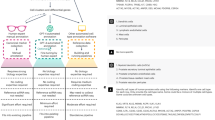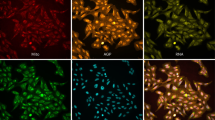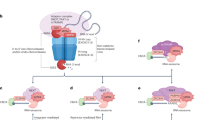Abstract
Until recently, transcriptome analyses of single cells have been confined to eukaryotes. The information obtained from single-cell transcripts can provide detailed insight into spatiotemporal gene expression, and it could be even more valuable if expanded to prokaryotic cells. Transcriptome analysis of single prokaryotic cells is a recently developed and powerful tool. Here we describe a procedure that allows amplification of the total transcript of a single prokaryotic cell for in-depth analysis. This is performed by using a laser-capture microdissection instrument for single-cell isolation, followed by reverse transcription via Moloney murine leukemia virus, degradation of chromosomal DNA with McrBC and DpnI restriction enzymes, single-stranded cDNA (ss-cDNA) ligation using T4 polynucleotide kinase and CircLigase, and polymerization of ss-cDNA to double-stranded cDNA (ds-cDNA) by Φ29 polymerase. This procedure takes ∼5 d, and sufficient amounts of ds-cDNA can be obtained from single-cell RNA template for further microarray analysis.
This is a preview of subscription content, access via your institution
Access options
Subscribe to this journal
Receive 12 print issues and online access
$259.00 per year
only $21.58 per issue
Buy this article
- Purchase on Springer Link
- Instant access to full article PDF
Prices may be subject to local taxes which are calculated during checkout




Similar content being viewed by others
References
Kurimoto, K. et al. An improved single-cell cDNA amplification method for efficient high-density oligonucleotide microarray analysis. Nucleic Acids Res. 34, e42 (2006).
Scanlon, M.J., Ohtsu, K., Timmermans, M.C. & Schnable, P.S. Laser Microdissection-Mediated Isolation and In Vitro Transcriptional Amplification of Plant RNA (John Wiley & Sons, Inc., 2009).
Emmert-Buck, M.R. et al. Laser capture microdissection. Science 274, 998–1001 (1996).
Tietjen, I. et al. Single-cell transcriptional analysis of neuronal progenitors. Neuron 38, 161–175 (2003).
Iscove, N.N. et al. Representation is faithfully preserved in global cDNA amplified exponentially from sub-picogram quantities of mRNA. Nat. Biotechnol. 20, 940–943 (2002).
Tougan, T., Okuzaki, D. & Nojima, H. Chum-RNA allows preparation of high-quality cDNA library from sing-cell quantity of mRNA without PCR amplification. Nucleic Acids Res. 36, e92 (2008).
Kurimoto, K., Yabuta, Y., Ohinata, Y. & Saitou, M. Global single-cell cDNA amplification to provide a template for representative high-density oligonucleotide microarray analysis. Nat. Protoc. 2, 739–752 (2007).
Kang, Y. et al. Transcript amplification from single bacterium for transcriptome analysis. Genome Res. 21, 925–935 (2011).
Passalacqua, K.D. et al. Structure and complexity of a bacterial transcriptome. J. Bacteriol. 191, 3203–3211 (2009).
Sambrook, J. & Russell, D.W. Molecular Cloning: A Laboratory Manual 2nd edn (Cold Spring Harbor Laboratory Press, 2001).
Son, M.S., Matthews, W.J.J., Kang, Y., Nguyen, D.T. & Hoang, T.T. In vivo evidence of Pseudomonas aeruginosa nutrient acquisition and pathogenesis in the lungs of cystic fibrosis patients. Infect. Immun. 75, 5313–5324 (2007).
Acknowledgements
This project was supported by the US National Institutes of Health (NIH)/National Institute of General Medical Sciences (NIGMS) grant number R01GM103580 and by the Center of Biomedical Research Excellence grant P20GM103516 from the National Center for Research Resources of the National Institutes of Health, and it was partially supported by Award U54 AI065359 from the National Institute of Allergy and Infectious Diseases. We acknowledge R. Hendrickson for his help with editing part of this protocol.
Author information
Authors and Affiliations
Contributions
T.T.H., Y.K. and M.H.N. designed the experiments. Y.K., I.M. and M.H.N. performed the experiments. Y.K., I.M., M.H.N. and T.T.H. wrote this manuscript.
Corresponding author
Ethics declarations
Competing interests
The authors declare no competing financial interests.
Rights and permissions
About this article
Cite this article
Kang, Y., McMillan, I., Norris, M. et al. Single prokaryotic cell isolation and total transcript amplification protocol for transcriptomic analysis. Nat Protoc 10, 974–984 (2015). https://doi.org/10.1038/nprot.2015.058
Published:
Issue Date:
DOI: https://doi.org/10.1038/nprot.2015.058
This article is cited by
-
Interfacing microfluidics with information-rich detection systems for cells, bioparticles, and molecules
Analytical and Bioanalytical Chemistry (2022)
-
The Burkholderia pseudomallei intracellular ‘TRANSITome’
Nature Communications (2021)
-
Microbial single-cell omics: the crux of the matter
Applied Microbiology and Biotechnology (2020)
-
Applications of single‐cell technology on bacterial analysis
Quantitative Biology (2019)
-
Cytometry meets next-generation sequencing – RNA-Seq of sorted subpopulations reveals regional replication and iron-triggered prophage induction in Corynebacterium glutamicum
Scientific Reports (2018)
Comments
By submitting a comment you agree to abide by our Terms and Community Guidelines. If you find something abusive or that does not comply with our terms or guidelines please flag it as inappropriate.



